Tea Houses, Gazebos and Buildings
Japanese Garden Design
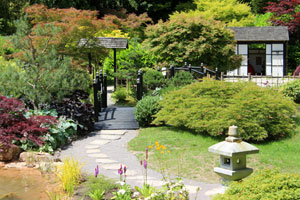
A beautiful Japanese tea garden is very much based around its tea house (chashitsu), an open structure that is designed for multiple uses.
These ornamental structures provide a place where visitors can shelter from the sun or rain, and of course, enjoy a traditional cup of tea as part of an elaborate tea ceremony (chanoyu). They also offer maximum impact in what might otherwise be a dull corner in the garden, being a good reason to walk along the pathways.
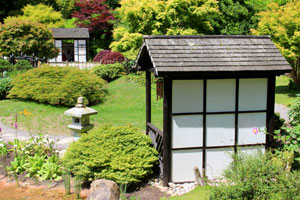
Design Elements
Packed with oriental character, tea houses and waiting arbours are generally individually designed and built to order, or adapted from an existing garden shed or summer house. Other similar structures include Kunamoto and Machiai shelters, Torii gates and thatched gateways.
Traditional tea house elements include curving roofs that are often thatched or covered with wooden shale / shingle or slate roofing tiles, black and white Shoji screens (wood lattice strictures backed with a translucent paper), sliding doors and ornamental windows.
A sheltered verandah area is usually positioned at the front, where you can sit back and enjoy the surroundings of your garden, whatever the weather. A hanging copper rain chain is a stylish addition to the guttering, allowing the rain water to trickle down in an attractive manner before reaching a circular granite water basin at the bottom of the chain.
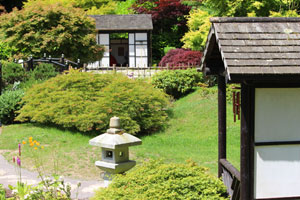
Situation and Position
Many Japanese gardens have a tea house positioned right next to a large koi pond, with the front slightly overhanging the water to suggest that it is sitting on a much larger pond, with fish swimming beneath.
The structure then provides somewhere to feed the koi and watch them swimming by. When placed by a koi pond, the building may also be used to hide or even house the filtration system, keeping it out of sight and the electrics safe.
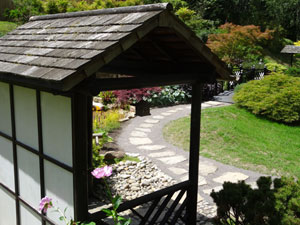
Flooring and Colour Palette
Tea houses tend to be relatively simple wooden structures, often having two or more rooms where guests can gather before tea is served. The flooring is traditionally made from tatami mats, with the walls being painted in neutral, natural colours, such as beige, pale cream and white.
For more impact in an ornamental Japanese garden, tea houses may be painted in the typical red and black coloured that is so often seen within oriental gardens.
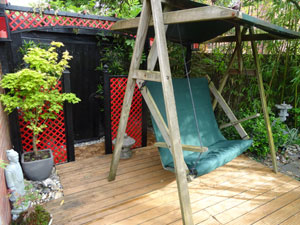
Making Your Own Homemade Tea House
If you like the idea of a Japanese tea house, but lack the budget or space, then consider painting and revamping your garden shed.
By painting it matte black and positioning a diagonal wooden trellis painted vermilion red in front of the entrance, you will create the illusion of your very own tea house, complete with obligatory verandah area.
Although this may not be authentic, it will certainly look the part and add plenty of oriental ambience to an otherwise dull, rather Western-style corner.
 A beautiful Japanese tea garden is very much based around its tea house (chashitsu), an open structure that is designed for multiple uses.
A beautiful Japanese tea garden is very much based around its tea house (chashitsu), an open structure that is designed for multiple uses.


